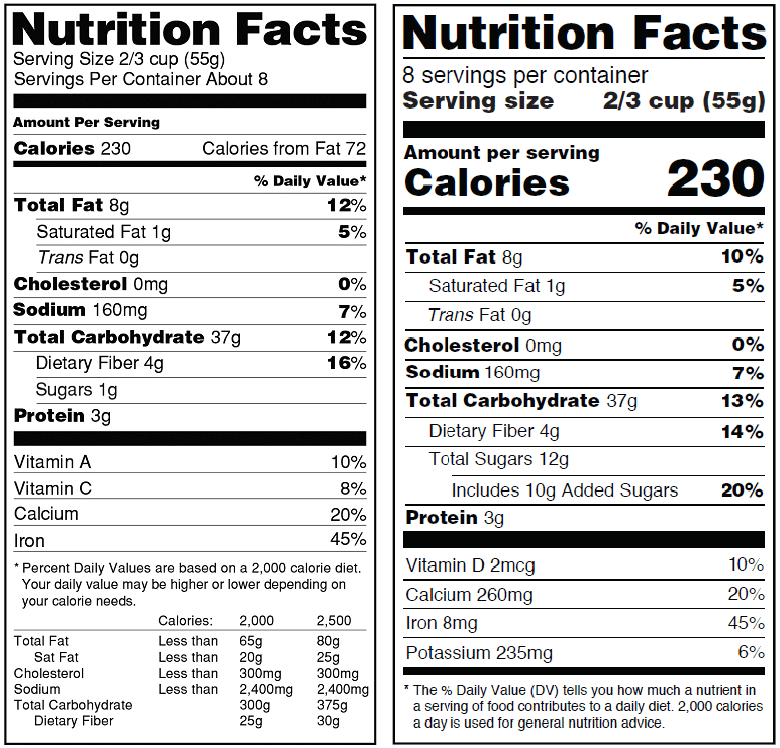 Why old labels and backdoor deals ruin your health
Why old labels and backdoor deals ruin your health
Nutrition labels and health choices

From a diabetic point of view
Serving sizes redefined
Along with my friend’s wish list for food label changes and larger print, the proposed new labels are also said to include not the previous “recommended” serving size, but rather the average serving size people actually eat, making the labeled nutrition information more accurate for the American diet. One example is to change the labeling of large containers of yogurt to reflect a typical serving size of 6 ounces – like the size of an individual cup of yogurt – rather than the current 8-ounce serving size details on some labels.
Increased nutrient details
Other important added information is rumored to be on the way, including more detailed amounts for vitamin D, potassium, calcium, and iron content – nutrients that are important to our everyday diets, and of which Americans should be careful to get enough.
Where does that sugar come from?
And finally, one that my diabetic friend, along with anyone watching their sugar intake can look forward to – the new labels are said to include any additional sugar that comes during the processing of some foods, and it will be marked as such. This change will help eliminate guessing about the sources of any listed sugar, ensure that all sugars are listed, and help to differentiate between natural and added sugar, making tracking the various types of sugar consumed in one’s diet much more accurate – and helping all Americans make healthier choices.
How the CSPI is helping
Helping Americans make healthier choices is one focus of the consumer advocacy group, Center for Science in the Public Interest (CSPInet.org). They have had a strong voice in this arena, and have been calling for an end to another overwhelming issue that stands in the way of healthier choices. That is, the influence big manufacturers have over the food choices Americans make at the grocery store. This influence revolves almost entirely around the fact that only big manufacturers can really compete dollar-wise for store shelf space and premium placement and promotion. That’s why you almost always see the same product lines in prominent positions and smack-dab in the shopper traffic flow at stores. They pay big bucks to be there.
I’ve written in the past about how supermarkets influence you to purchase certain products. And even about how they compete for premium shelf placement, ad placement, and sale promotions. This is what CSPI is calling out. They maintain, and I’m inclined to agree, that the way manufacturers and stores make deals to feature and shelve products definitely affects the choices Americans readily see and buy. CSPI points out that consumers are denied the availability of products from smaller, and potentially healthier, companies. This is simply because small companies cannot afford to compete with huge companies for shelf space at local stores.
Ever hear of Clemmy’s?
In fact, many have gone bankrupt just trying to get their products out to the public. CSPI cites one such company that my diabetic friend would have loved: Clemmy’s, an independent sugar-free ice cream brand. Clemmy’s tried but ultimately filed bankruptcy. They failed to compete with the big manufacturers who could afford to pay to push Clemmy’s products to low-profile positions, and even sometimes off freezer shelves completely.
Stores and manufacturers have operated this way for years. Therefore, changes to the way manufacturers compete for shelf space could be a long time from now. It’s good to know that it is being called into question from a health standpoint. Perhaps viewing it as a disservice to the American public to make bringing newer, healthier products to the marketplace so difficult and expensive will breathe new life into the argument. In the meantime, let me encourage you to read existing nutrition labels, watch for the new ones in the coming months, buy smart choices at the grocery store, and have a happy and healthy 2017.


